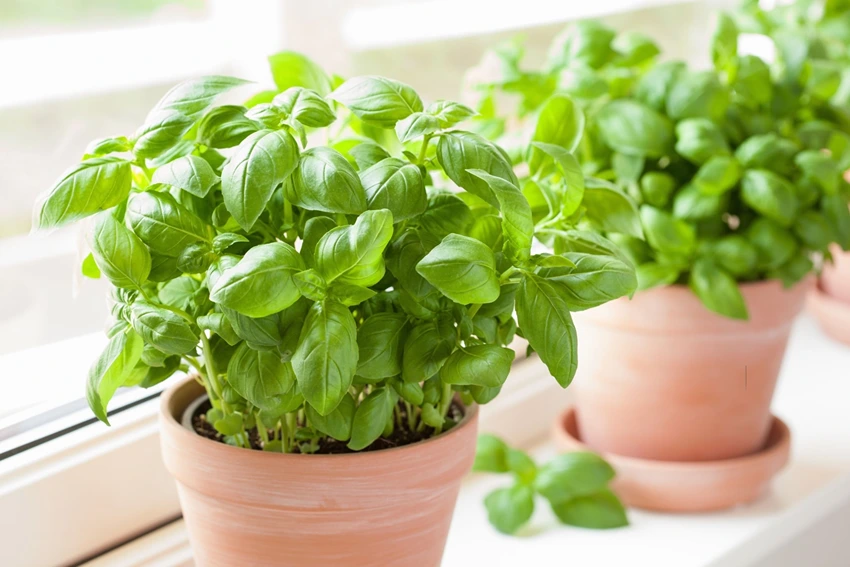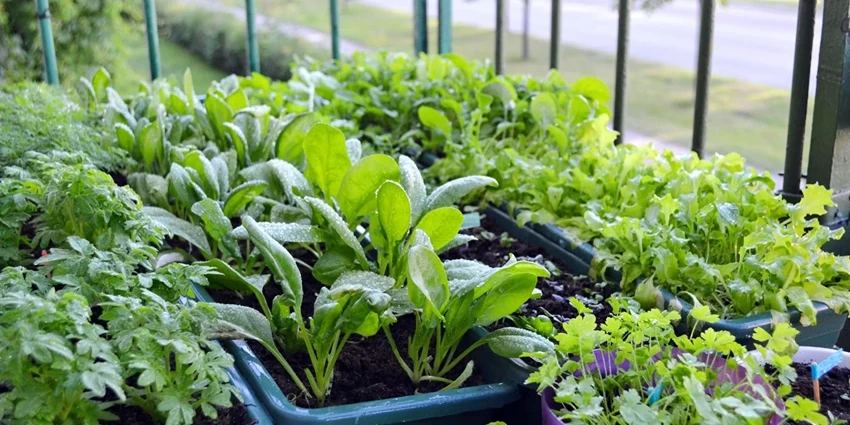All products were chosen independently by our editorial team. This review contains affiliate links and we may receive a commission for purchases made. Please read our affiliates FAQ page to find out more.
Home » Gardening Methods » Herb Gardening for Culinary Use
Herb gardening is not just a means to an end for culinary enthusiasts; it’s a delightful journey that begins with a seed and culminates in the burst of flavor on your palate. The art of cultivating your own herbs is both a practical pursuit and a passion, allowing you to infuse freshness into every dish. Whether you’re a seasoned gardener or a novice with a windowsill, the path to creating your own herb haven is rich with aromatic rewards.
Tip: A cordless drill can be an invaluable tool in customizing your herb garden’s layout, allowing for the easy assembly of raised beds or vertical planters to maximize space and accessibility for culinary use. More information on cordless drills here.
Register for our latest in-depth reviews and product round-ups from the experts.
Enter your email address below to receive our monthly review emails.
By entering your details, you are agreeing to our terms and conditions and privacy policy. You can unsubscribe at any time.
Selecting the Right Herbs for Your Garden
When embarking on your herb gardening adventure, the first step is to select the right herbs. This choice is crucial, as it determines not just the future of your garden, but the flavors that will grace your kitchen.

Climate Considerations and Herb Varieties
- Basil: Thrives in warm environments.
- Parsley: Resilient in cooler climates, and maintaining such climates can be easier with tools like best cordless lawn mowers.
- Thyme: Prefers full sun and well-drained soil.
Table 1: Herb Climate Compatibility
| Herb | Preferred Climate | Sunlight Needs |
| Basil | Warm | Full sun |
| Parsley | Cool to temperate | Partial shade |
| Thyme | Varied | Full sun |
Understanding Your Culinary Palette
Before you plant, think about the herbs you most commonly reach for when cooking, like ginger. Learn more about cultivating this flavorful herb in our guide on growing ginger in the UK. Are you a fan of Italian cuisine, or do you prefer the complex flavors of Asian dishes? Your culinary style will guide your herb choices.
Table 2: Herbs and Their Culinary Uses
| Herb | Cuisine | Use |
| Oregano | Italian | Tomato sauces, grilled meats |
| Cilantro | Asian | Stir-fries, curries |
| Rosemary | Mediterranean | Roasted vegetables, meats |
Designing Your Culinary Herb Garden
Designing your herb garden, including aspects of medicinal herb gardening, is a creative process tailored to your space and needs, suitable for any environment, from sprawling backyards to modest balconies.
Maximizing Small Spaces
For those with limited space, vertical gardens or container gardening can be a godsend. Utilizing hanging baskets or wall-mounted planters can turn a small area into a lush herb oasis.
Companion Planting for a Thriving Garden
Companion planting is not just about saving space; it’s about creating a symbiotic environment where herbs help each other grow. For example, planting basil near tomatoes can help repel pests.
Table 3: Companion Planting Guide
| Herb | Companion Plant | Benefits |
| Basil | Tomato | Repels flies and mosquitoes |
| Chives | Carrots | Deters aphids |
| Mint | Cabbage | Repels cabbage moths |
Planting and Maintenance Tips
A successful herb garden requires more than just planting; it demands care and attention, including regular clean-up using tools like the best leaf blower vacuums. The right techniques can make the difference between a flourishing garden and a faltering one
Soil Preparation and Planting Techniques
The foundation of any garden is its soil. For herbs, well-draining soil enriched with organic matter is ideal. Learn more about herb gardening soil preparation to ensure the best growth conditions for your culinary herbs. When planting, ensure that the roots have enough room to spread out.
Watering, Feeding, and Pruning
Regular pruning not only keeps your plants tidy but also encourages new growth. Ensure you have the right tools like the best pruning saws for effective pruning.
Table 4: Herb Watering and Feeding Schedule
| Herb | Watering Frequency | Fertilizer Type |
| Basil | Weekly | Balanced, organic |
| Parsley | Bi-weekly | High-nitrogen |
| Thyme | As needed | Minimal |
Harvesting and Preserving Your Herbs
The moment you snip off your first home-grown herb with tools like the best hedge trimmers is a moment of pure satisfaction. To ensure a continuous supply, it’s important to harvest correctly and preserve your bounty.

Best Practices for Harvesting Herbs
- Harvest in the morning when the essential oils are strongest.
- Cut back no more than one-third of the plant to allow for regrowth.
Drying, Freezing, and Other Preservation Methods
Drying herbs is a traditional method that involves hanging bunches in a warm, dry place. Freezing, on the other hand, can preserve the fresh taste of herbs like basil and cilantro.
Table 5: Herb Preservation Techniques
| Herb | Drying | Freezing |
| Basil | Not recommended | Excellent |
| Parsley | Good | Good |
| Thyme | Excellent | Good |

Cooking with Home-Grown Herbs
The true joy of herb gardening is in the cooking. Fresh herbs can transform a simple dish into something extraordinary.
Enhancing Flavors with Fresh Herbs
Incorporating fresh herbs into your cooking is an art. A sprig of rosemary can elevate a roast, while fresh basil can make a pasta dish sing.
Recipes and Pairings
Experiment with different herb combinations to discover new flavors. Here are some ideas to get you started:
- Pesto: Basil, pine nuts, and Parmesan.
- Herb Butter: Parsley, chives, and garlic.
Preserving the Bounty: Keeping Herbs Fresh All Year
The end of the growing season doesn’t mean the end of fresh flavors. With the right preservation techniques, you can enjoy the taste of summer even on the coldest winter days.
Freezing Herbs for Freshness
Freezing is one of the simplest ways to preserve herbs. Chop them finely, mix with water, and freeze in ice cube trays for easy portioning.
Table 6: Freezing Herbs for Longevity
| Herb | Preparation | Freezing Method |
| Basil | Chopped | Ice cube trays with water |
| Chives | Finely sliced | Freezer bags, flat |
| Rosemary | Whole sprigs | Air-tight containers |
Creating Herb-Infused Oils and Vinegars
Herb-infused oils and vinegars are not only a means of preservation but also a way to add a gourmet touch to your cooking.
Table 7: Infusion Pairings
| Herb | Oil/Vinegar | Use |
| Thyme | Olive oil | Dressings, marinades |
| Mint | White vinegar | Salads, desserts |
The Culinary Herb Garden: A Chef’s Secret
With your pantry stocked with preserved herbs from your diligent vegetable garden care, the culinary possibilities are endless. Whether fresh or preserved, herbs add a personal touch to every dish, reflecting the care and attention you’ve dedicated to your garden.
Herb Combinations for Signature Dishes
Combining herbs can create complex flavors that are greater than the sum of their parts. Here’s a guide to some classic pairings:
Table 8: Herb Combination Guide
| Combination | Dishes | Flavor Profile |
| Basil & Oregano | Italian | Robust, earthy |
| Cilantro & Lime | Mexican | Bright, zesty |
| Rosemary & Garlic | French | Rich, aromatic |
Frequently Asked Questions
Begin by choosing a sunny spot, selecting herbs that you love to cook with, and preparing the soil or pots with good drainage.
Absolutely! Many herbs thrive on a sunny windowsill and can be grown year-round.
The best time is in the morning after the dew has evaporated but before the sun is at its hottest.
Herb gardening is more than just a hobby; it’s a lifestyle choice that brings the natural world into your kitchen. It’s about understanding the cycle of growth, the joy of harvest, and the pleasure of tasting. It’s about the satisfaction of saying, “I grew that,” as you sprinkle fresh basil over a steaming plate of pasta. Whether you’re a beginner or a seasoned green thumb, the world of herb gardening is waiting for you to dig in.
Eleanor is the quintessential spirit of the British gardener — passionate, dedicated, and endlessly curious about the natural world. Born and raised amidst the verdant landscapes of the Cotswolds, she developed an early love for the outdoors, often spending hours in the family garden with her hands buried in the soil, nurturing every type of plant she could find.








